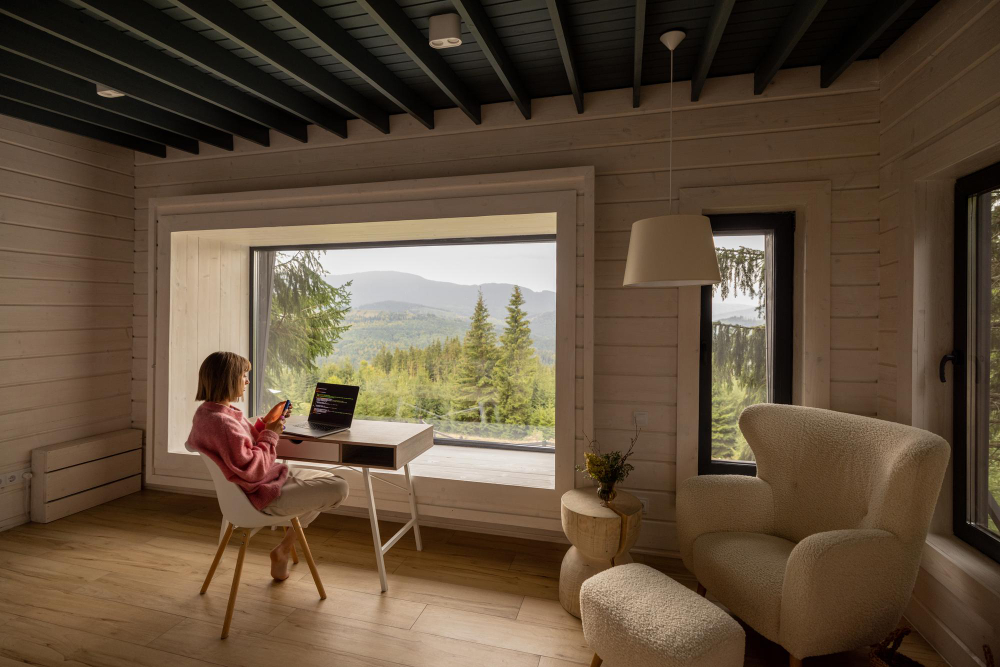Last updated on
Sustainability has become a significant consideration for homeowners and builders alike, and the role of well-designed windows is pivotal in promoting eco-friendly living spaces. In this blog, we’ll explore how the right choice of windows not only enhances the aesthetic appeal of a home but also contributes to energy efficiency and sustainability.
From reducing the reliance on artificial heating and cooling to leveraging natural light and ventilation, well-designed windows are both a practical and environmental triumph. Join us as we delve into the world of windows and uncover their potential to create a greener and more cost-effective home.
Energy Efficiency

Energy efficiency is a cornerstone of sustainable living, and windows play a crucial role in this aspect of home design. By choosing high-quality, energy-efficient windows, homeowners can significantly reduce their heating and cooling expenses.
Having experts around when you need your windows replaced provides the best assurance of longevity and durability. Additionally, energy-efficient windows help to keep homes cooler in summer and warmer in winter, reducing the need for excess artificial heating and cooling.
Natural Lighting
Natural lighting is a key component of sustainable architecture, harnessing the sun’s energy to illuminate homes. By strategically placing well-designed windows, a home can maximize daylight penetration, significantly decreasing the necessity for electric lighting during the daytime.
Elevated natural light levels have been associated with improved mood and productivity, making an environment more pleasant and healthful for its inhabitants. Additionally, utilizing natural light effectively can help in reducing a building’s carbon footprint, aligning residential living with the principles of environmental stewardship.
Ventilation and Indoor Air Quality

The relationship between well-designed windows and indoor air quality cannot be overstated. Proper ventilation is essential in maintaining a healthy and comfortable home environment. Windows that allow for the easy control of airflow can help to purge indoor pollutants and reduce moisture levels, minimizing the risk of mold and mildew growth.
Additionally, the inflow of fresh air from the outside can help dissipate volatile organic compounds (VOCs) emitted from household products, contributing to a safer indoor atmosphere. By enhancing air circulation without over-relying on mechanical ventilation systems, these windows support a sustainable, energy-efficient home while ensuring that the air residents breathe is as fresh and clean as possible.
Material Selection
The materials used in the manufacture of windows have a significant impact on their sustainability and efficiency. Ideal materials for energy-efficient windows include sustainably sourced wood, which offers excellent insulation properties and aesthetic warmth, and uPVC, which is low maintenance and has good thermal resistance.
Aluminum, when paired with a thermal break, is also a viable option due to its durability and recyclability. Advanced glass options, such as low-emissivity (low-E) and gas-filled double or triple glazing, are essential for minimizing heat transfer, thereby enhancing the window’s insulation capacity.
Selecting the right materials not only improves the window’s performance but also its lifecycle environmental impact, embodying the commitment to eco-friendly living.
Insulation and Thermal Performance
The insulation properties of windows are integral to their thermal performance, influencing both comfort and energy consumption in homes. Well-insulated windows create a barrier against temperature extremes, helping to maintain a consistent indoor climate regardless of outside weather conditions.
The use of advanced technologies, such as argon or krypton gas-filled spaces between panes and low-E coatings, reflects heat into the room during winter and blocks infrared radiation from entering in summer. These features not only improve the thermal efficiency of windows but also contribute to significant energy savings over time.
By prioritizing insulation when selecting windows, homeowners are investing in a sustainable feature that minimizes energy loss and supports a more eco-friendly home.
Solar Heat Gain Control
Effective solar heat gain control is a critical aspect of sustainable window design, allowing homeowners to manage the amount of solar energy that enters their homes. Windows that are equipped with features such as overhangs, awnings, or low-E coatings can mitigate the impact of direct sunlight during hot seasons, while still harnessing its warmth during cooler periods.
This regulation of heat transfer not only enhances occupant comfort but also contributes to reduced reliance on heating and cooling systems, leading to lower energy consumption and utility bills. By carefully selecting windows with the appropriate solar heat gain coefficient (SHGC), residents can optimize their homes for energy conservation and play a part in the global effort towards sustainability and energy independence.
The Takeaway
Well-designed windows are crucial in promoting sustainable living by contributing to energy efficiency, natural lighting and ventilation, material selection, insulation, thermal performance, and solar heat gain control. By recognizing their potential to create greener homes, we can make small but significant changes that add up to a more sustainable future for ourselves and the planet.
Let’s embrace the power of well-designed windows and move towards more environmentally responsible living.
Table of Contents




